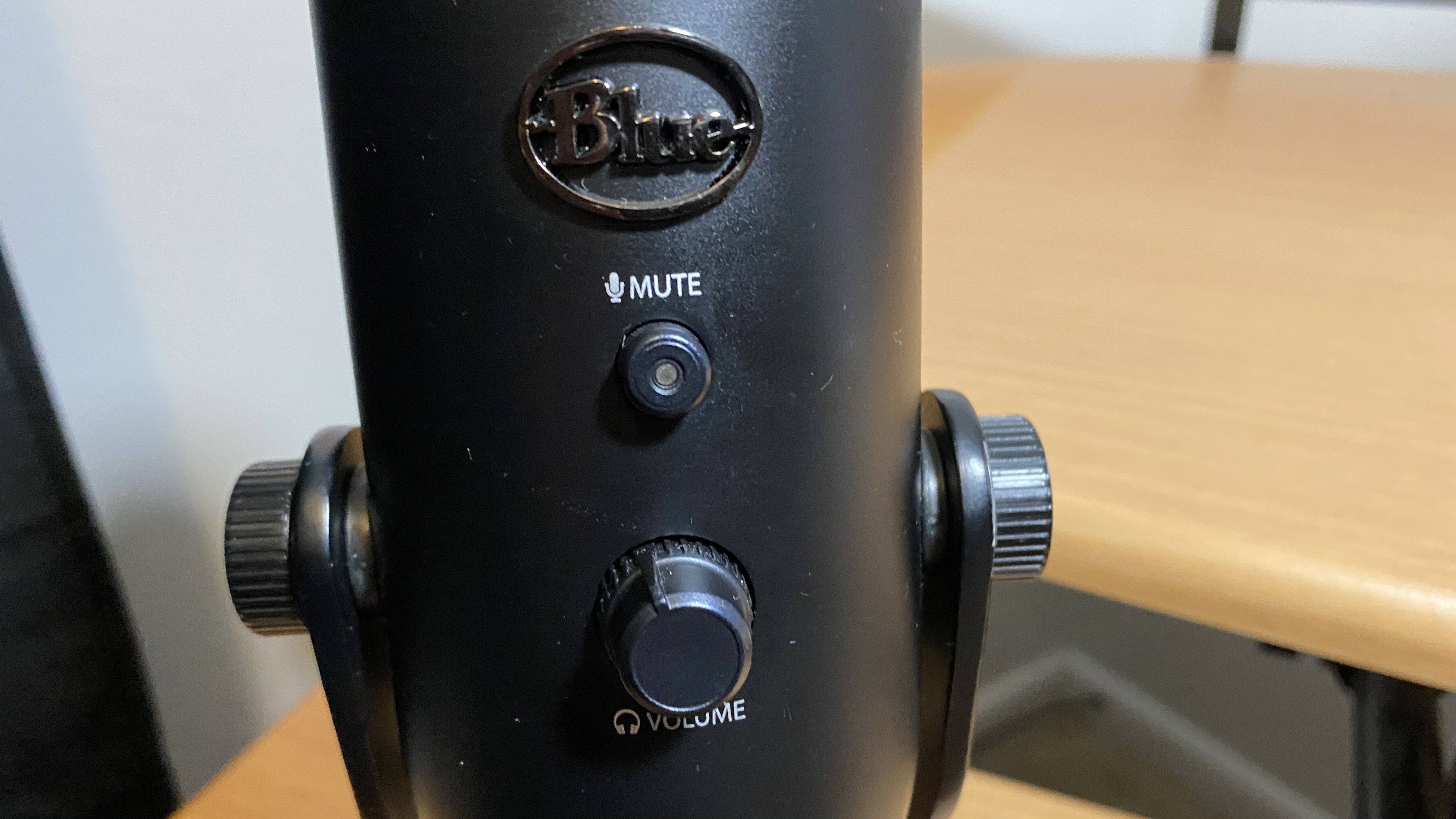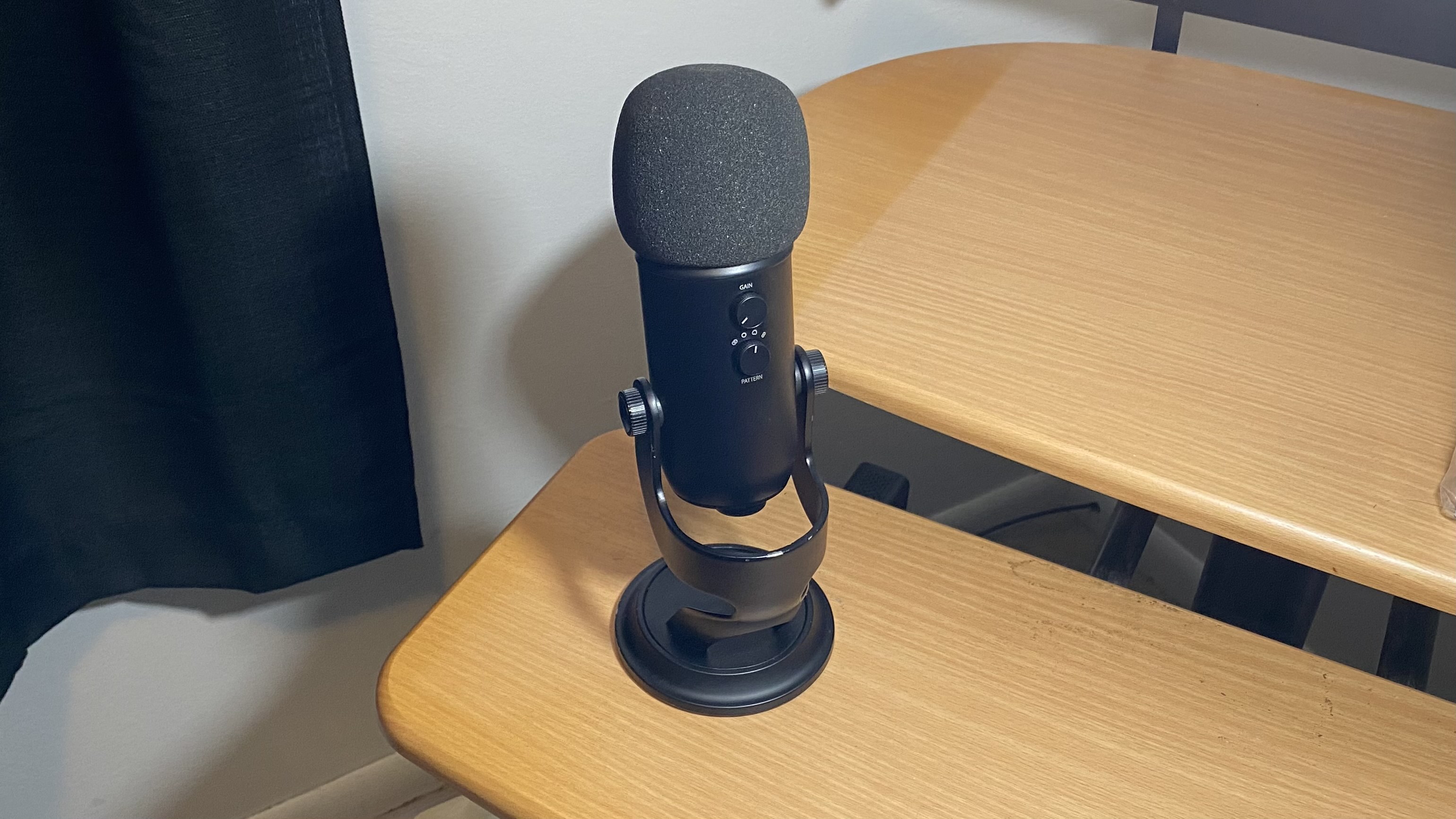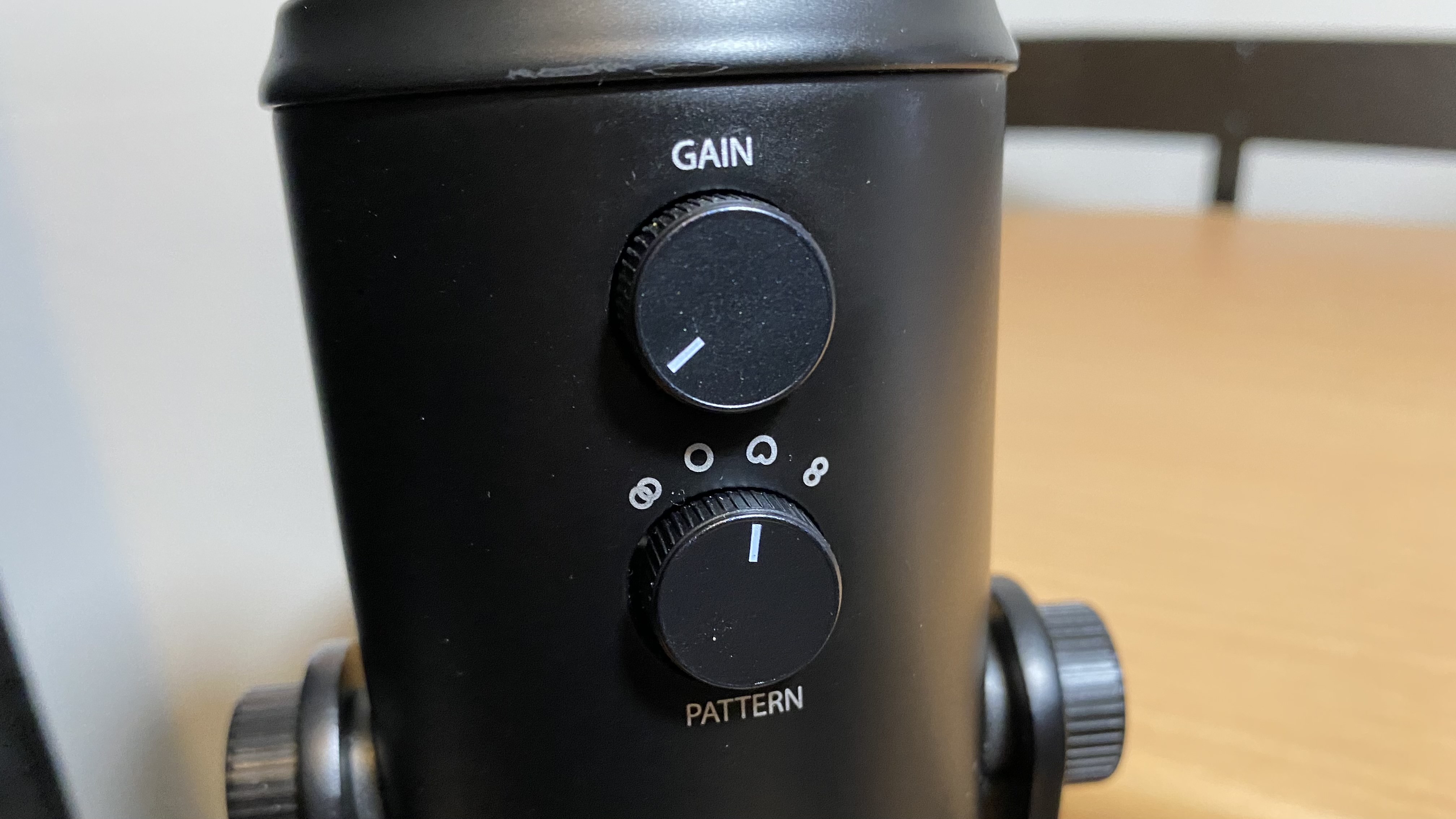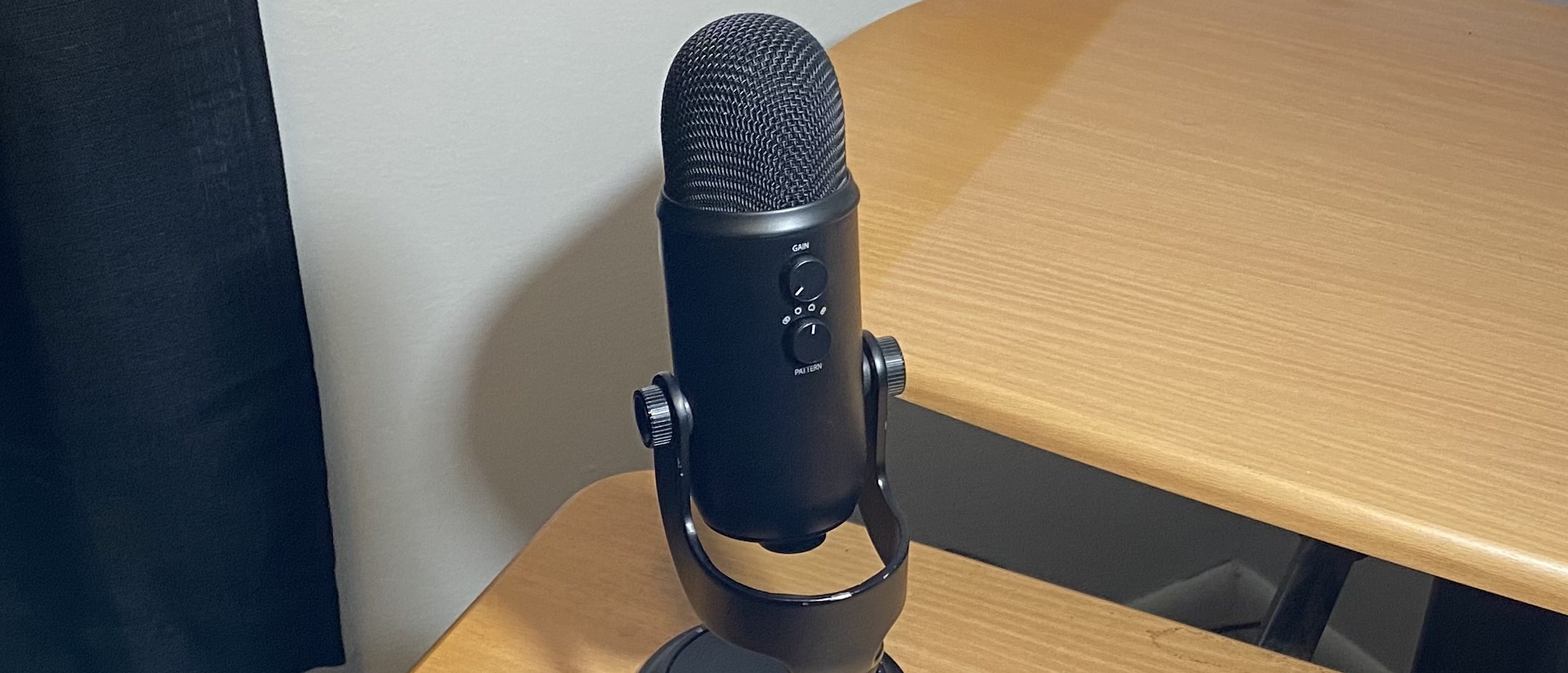Tom's Guide Verdict
The Blue Yeti microphone remains a favorite for recording and podcasting, thanks to its ease of use and relative affordability. Whether recording by yourself or in a roundtable discussion, the Blue Yeti is up to the task.
Pros
- +
Easy to use
- +
Good recording quality with multiple modes
- +
Reasonably priced
- +
Sturdy design
Cons
- -
Sensitive to pops and shocks/bumps
- -
No XLR output
Why you can trust Tom's Guide
From the moment I saw the Blue Yeti microphone, I just knew it had the look. As a podcaster and former radio host, that studio design and feel is important for authenticity, and the Blue Yeti had both to spare. Especially the Blackout Edition seen here.
Connection: USB
Ports: USB-C, 3.5mm aux out
Condensers: 3
Directional patterns: Cardioid, Bidirectional, Omnidirectional, Stereo
Size: 4.7 x 4.9 x 11.6 inches
Weight: 3.4 pounds
I’d gotten by with a handheld dynamic mic and a digital voice recorder, and after using the Blue Yeti, I could tell it wasn’t just about studio aesthetics — it was a clear step up on from my old setup on recording quality too. It’s not perfect, but as you’ll read in this Blue Yeti review, it’s easily one of the best microphones for beginners and pros alike.
- Complete your setup with the best webcams
- Check out the best desktop speakers right now
- Movo UM700 review: The Blue Yeti killer?
Blue Yeti review: Price and availability
With an MSRP of $130, the Blue Yeti microphone is an affordable gateway into the world of recording or podcasting. It’s available on Amazon, Best Buy and Blue’s own website.
There are both more “professional” options that cost around $300, and slightly cheaper USB mics like the Blue Yeti Nano and the JLab Talk. But the flagship Blue Yeti is more than sufficient in terms of its function and fashion, while maintaining a very reasonable price. Notably it has a very similar feature set to the EPOS B20, and that has a list price of $199.
Blue Yeti review: Design

While the Blue Yeti comes in various colors, the Blackout Edition is the sleekest of the bunch. It’s so smooth-looking that one almost forgets about the clunky base at the bottom. This base is a minor inconvenience, though if you add a boom arm, it becomes a virtual non-factor.
With its traditional look and simple design, the Blue Yeti makes you feel like you’re in the studio, even if you’re recording at home or on the road. The front of the mic has a mute button and a volume knob for easy access and adjustment. On the back, there’s a gain knob and a switch for four directional pattern modes — cardioid, omnidirectional, bidirectional and stereo.
It’s not just alluring, either. The Blue Yeti is tough — and tested by my 3-year-old son, to be exact. In his attempt to record his own podcast, or simply try on dad’s headphones, my son has pulled over the Blue Yeti mic at least thrice. Save for a couple of dings, the Blue Yeti hasn’t missed a beat. Even without a case, it travels well and doesn’t take up much space. You can literally record from anywhere with a computer and the Blue Yeti. Trust me, I’ve done it.
There’s no difficult setup with the Blue Yeti, either. You literally take it out of the box, plug in the USB cable from your mic to your computer, and you’re ready to go. I’m an Apple user, and the mic works great with Garageband. Whether you’re a PC person or an Apple user, the mic is extremely user-friendly.
- The best gaming microphones you can buy today
Blue Yeti review: Sound quality

The cardioid mode icon looks like a heart, which is fitting for me because it’s the option I love the most. It’s the ideal mode of operation for most podcasters. This setting is good for not only podcasts, but gaming, streaming and musical recording as well. I’ve even used the Blue Yeti to record voice-over advertisements and have integrated music onto those commentaries seamlessly, with professional results.
The mode of choice for one-on-one interviews is the bidirectional mode. It records from the front and back of the microphone with clarity. Remember how I used to record with a
digital voice recorder? The Blue Yeti has largely eliminated the need for this, because I can either record in person or have an over-the-phone conversation via speaker that the mic picks up clearly.
It goes without saying that the upgrade in quality is light years better, with less work done to remove pops and bumps. Most of my experience in editing now is removing folks’ inclination to say “um” in the midst of a dialogue.

All interviews aren’t monologues or mano a mano, though. That’s when the omnidirectional mode comes into play. It’s a great feature for roundtable discussions or group chats, with one caveat — it picks up every bump and shock imaginable. During my experience with interviews, I’ve often told guests to try to keep their hands to themselves and not fidget or tap their hands unless they’re making a profound point. This is where, even in imperfection, the Blue Yeti is still impactful. An important point followed with a pounding of the fist onto a table can be “felt” in the omnidirectional mode and adds a little “oomph” to a discussion. With that said, a pop filter is almost mandatory for the Blue Yeti, and is relatively inexpensive.
Stereo mode, which can record sound to left and right audio channels, is more for musical recording than podcasts or streaming. But I consulted some musicians, who all had good things to say about the Blue Yeti’s stereo recording quality. Between this and the other three modes, all your bases are covered as a content creator.
Blue Yeti review: Verdict
For $130, the Blue Yeti mic is a small price to pay for world-class sound and convenience. In a world with perpetual innovation in recording and podcasting, the Blue Yeti retains its staying power even after years in the game. Even more dedicated mics like the Rode PodMic or streaming-focused Elgato Wave: 3 aren't necessarily a better choice.
Perhaps you don’t want to spend more than $100 on a mic, in which case the JLab Talk is also one of the best USB microphones worth considering. But if you’re serious about podcasting, or serious about creating content in general, it’s worth the extra $30 for another of the best mics in the business.
Ken J. Makin is a tech and entertainment writer for Tom’s Guide, and has nearly 20 years of experience as a journalist. He’s an avid podcaster and freelancer for various sites, including ESPN’s The Undefeated and The Christian Science Monitor. When he’s not podding or writing, Ken is likely spending time with his wife and children.


